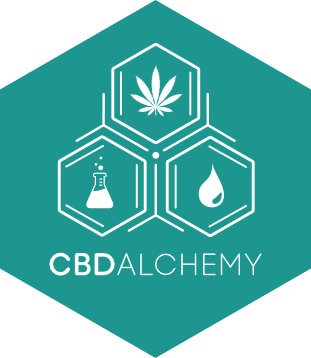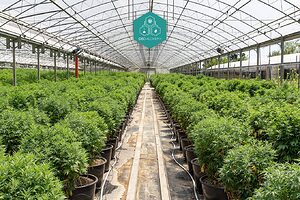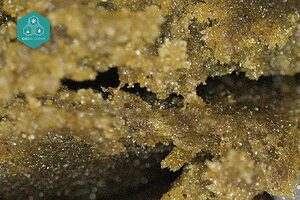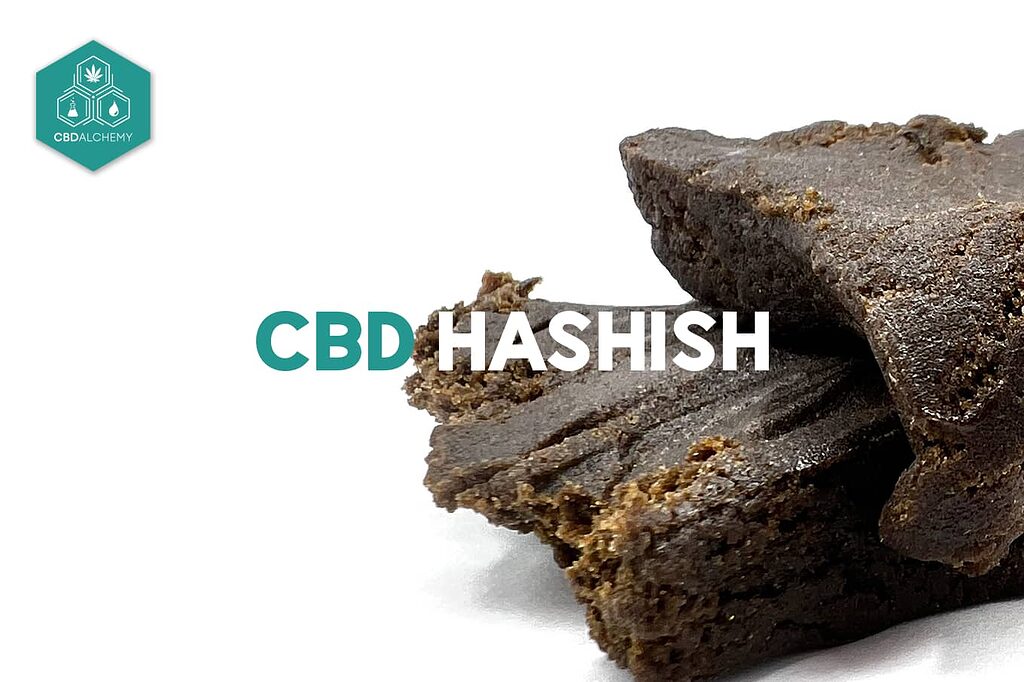
Hashish, derived from the cannabis plant, raises questions about its effects and the legislation surrounding it. In this article, you will discover its origin, its repercussions for your health, and the legal regulations affecting its consumption. Dive in to gain a thorough understanding of this potent psychoactive substance.
Key Points
- Hashish is a substance derived from the cannabis plant, rich in cannabinoids such as THC and CBD, with a history of use dating back to the Arab world around 900 AD.
- There are traditional extraction techniques such as dry screening and hand rubbing, as well as modern methods including solvent extraction and bubble hash, improving efficiency and purity.
- Hashish consumption can produce everything from relaxing and euphoric effects to memory problems and cardiovascular risks, and its use is subject to varied laws and penalties depending on the locality.
Understanding Hashish: Origin and Composition
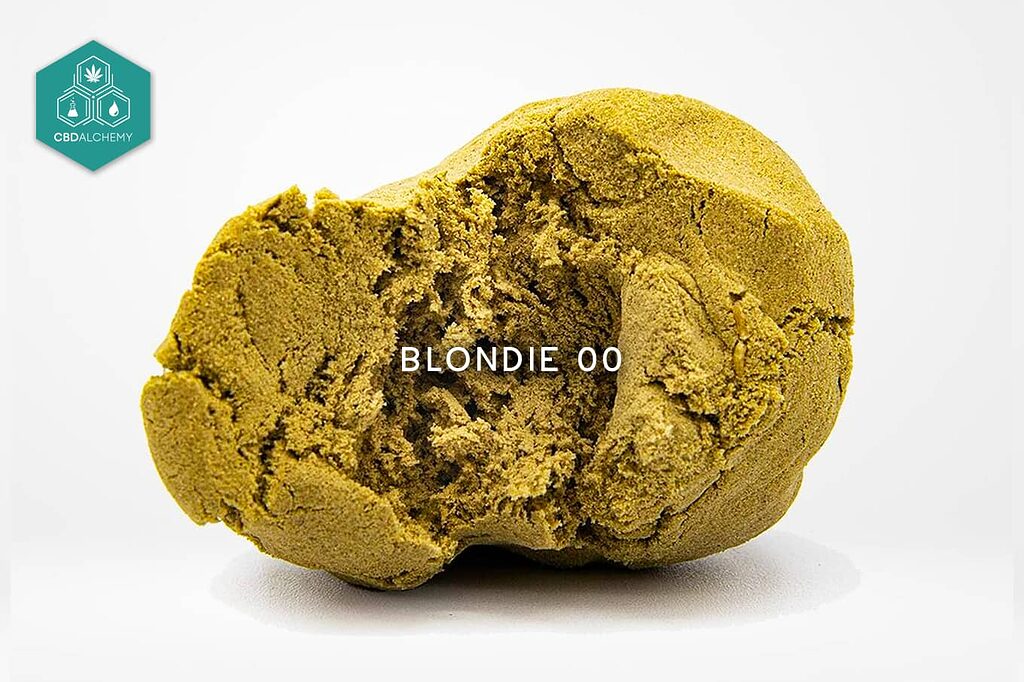
The resin of the cannabis plant is the source from which hashish, a psychotropic substance, is extracted. This product is known for its psychoactive effects. This concentrated resin contains cannabinoids, with THC being the main responsible for the psychoactive effects and CBD known to counteract some of those effects.
Hashish is not a recent invention. In fact, it is believed to have originated in Central Asia and became popular in the Arab world around 900 AD, and has been part of the region’s culture ever since. But what exactly is hashish and what makes it up?
What exactly is hashish?

Hashish is a concentrated resin derived from the flowers and leaves of the cannabis plant. It is mainly extracted from trichomes, small resin glands located in the flowers and leaves. These trichomes contain cannabinoids such as THC and CBD, which are the active components of hashish.
But what are these cannabinoids and how do they affect the body?
Active Ingredients of Hashish
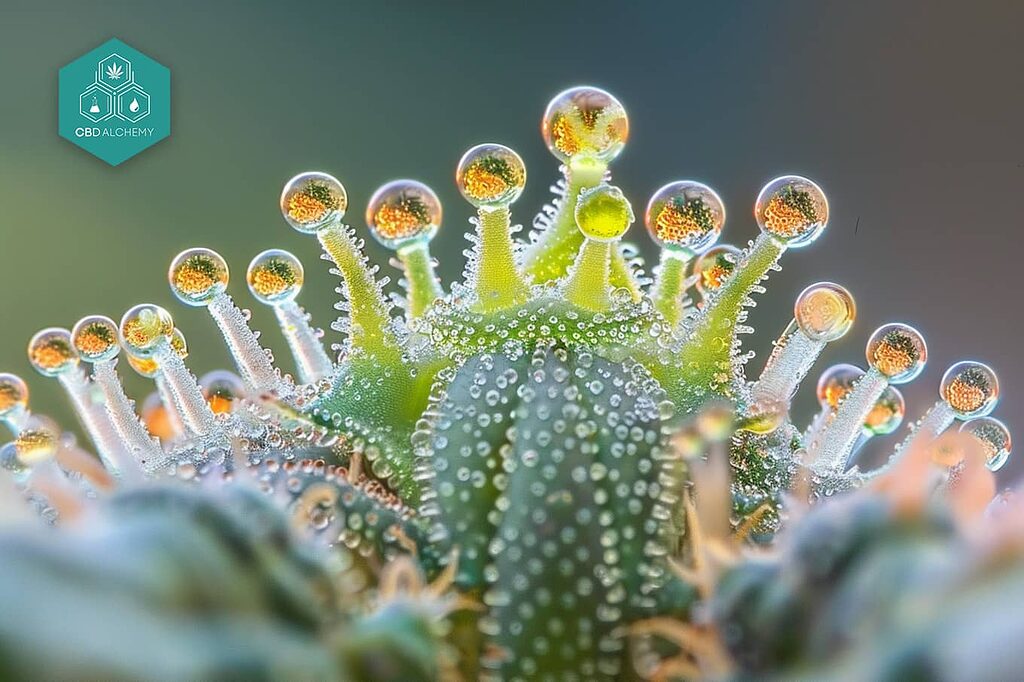
Hashish is a substance rich in cannabinoids, the most notable being THC and CBD, each with different effects on the body. THC is the main psychoactive compound in hashish, responsible for the euphoric effects and sensory alterations caused by its consumption. This psychoactive agent is extracted from the cannabis plant and has a significant impact on the user.
On the other hand, CBD is also present, although in smaller quantities than THC. This component has anti-inflammatory and analgesic properties and is legal in Spain as long as it contains less than 0.2% THC. The concentration of cannabinoids in hashish is considerably high, reaching more than 60% THC or CBD, which makes it a much more potent substance than marijuana.
Traditional and Modern Production Methods
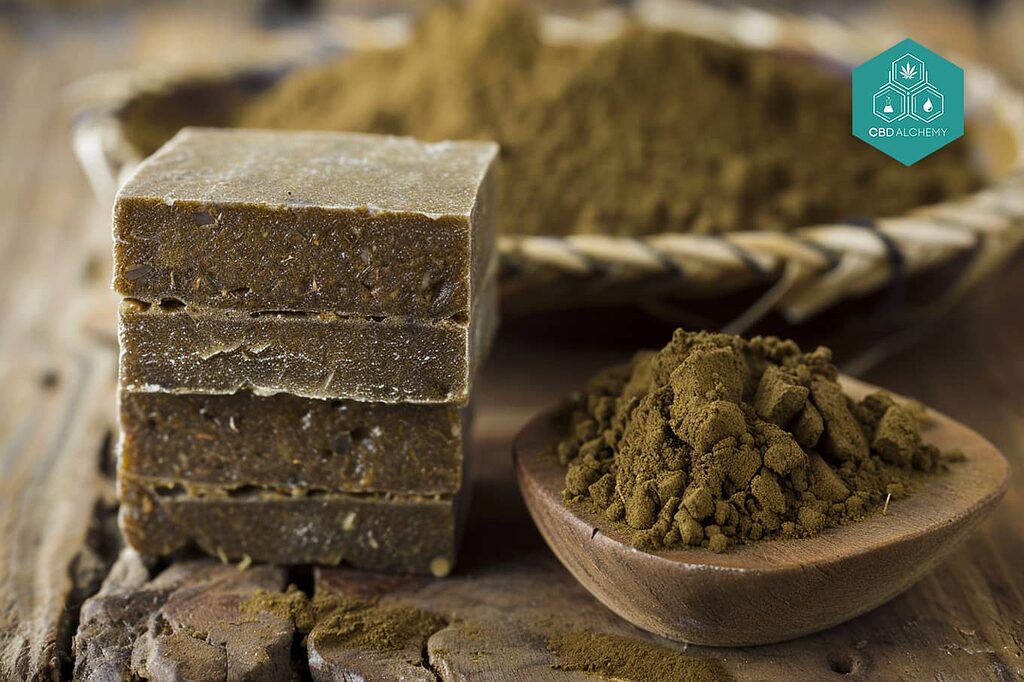
Hashish production has gone through a fascinating evolution over the centuries. Traditionally, hashish production has focused on a natural process, without the incorporation of chemicals. Ancestral methods include dry screening and the hand rubbing technique.
However, in recent decades, modern production methods have emerged that include solvent extraction and bubble hash. These innovative methods have incorporated advanced technology, which has improved efficiency and product purity.
But what exactly are these ancient and modern techniques?
Ancient Extraction Techniques
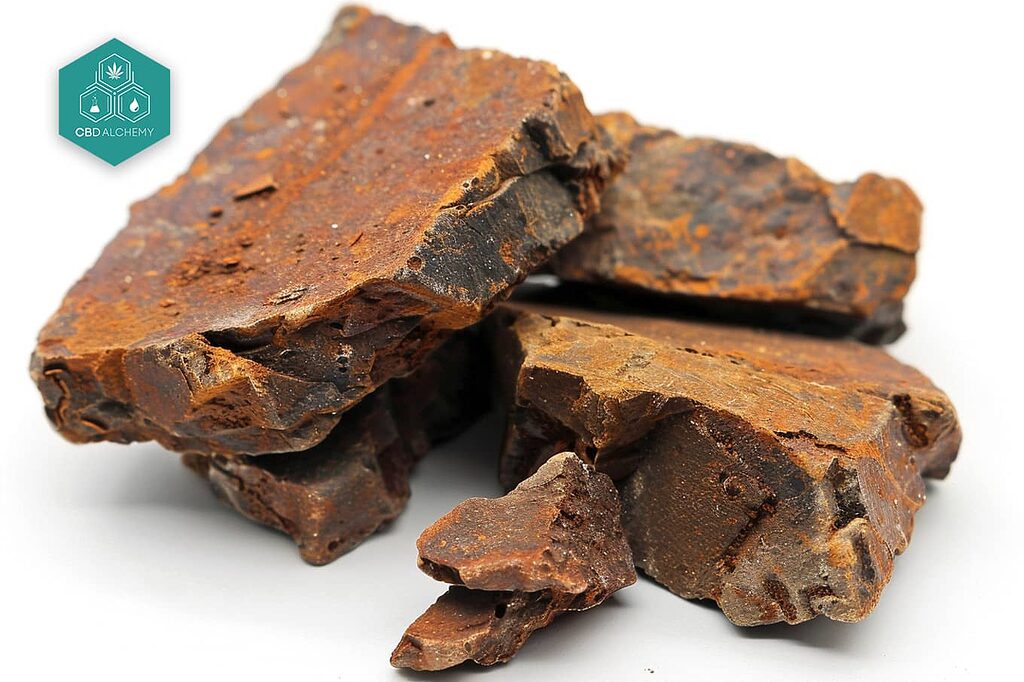
The ancestral techniques of hashish extraction are a clear example of how learning and knowledge have been passed down through the centuries. One of the most traditional methods is dry screening.
This process involves rubbing dried cannabis plants over a fine sieve to separate the trichomes, which are then processed with heat and pressure to form hashish.
Another age-old technique is hand-rubbing to create charas, a type of hashish. This process involves collecting resin by hand-rubbing the flowers of female cannabis plants, which is then rolled into balls.
Although this method is laborious, it has been valued for centuries for its ability to produce high-quality hashish.
Innovations in Hashish Extraction

While ancestral extraction techniques are still relevant, modern innovations have revolutionized hashish production.
One example is bubble hash, a product obtained by submerging frozen cannabis buds in ice water and collecting the trichomes that are released.
Likewise, rosin extraction is another innovative method that has gained popularity in recent years. This process requires the use of presses specifically designed for pollen and different solvent processes. These modern methods have allowed for more efficient and pure hashish production.
International Hashish Varieties
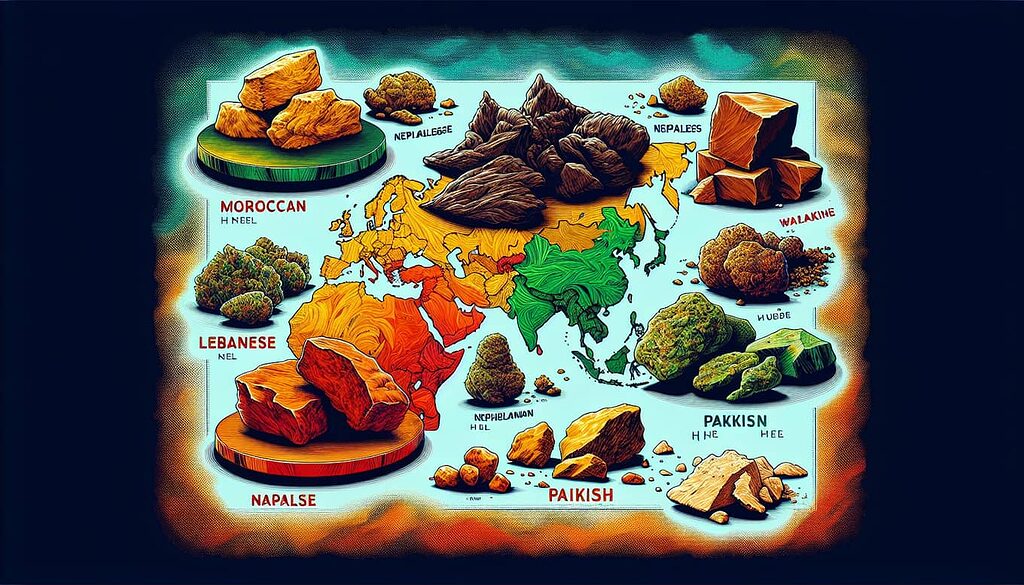
Throughout the world, there are different types of hashish, such as:
- Moroccan
- Lebanese hashish
- Nepalese
- Pakistani
- Turkish
Each of these types of hashish has its own history and unique characteristics. Morocco, for example, is recognized as one of the world’s largest producers and exporters of hashish.
However, it is not only Morocco that is known for its hashish. Afghanistan and Turkey are also known for their hashish production. And Europe stands out as the main international consumer market for hashish.
But what are the differences between Moroccan and Lebanese hashish and other notable varieties?
Moroccan and Lebanese Hashish
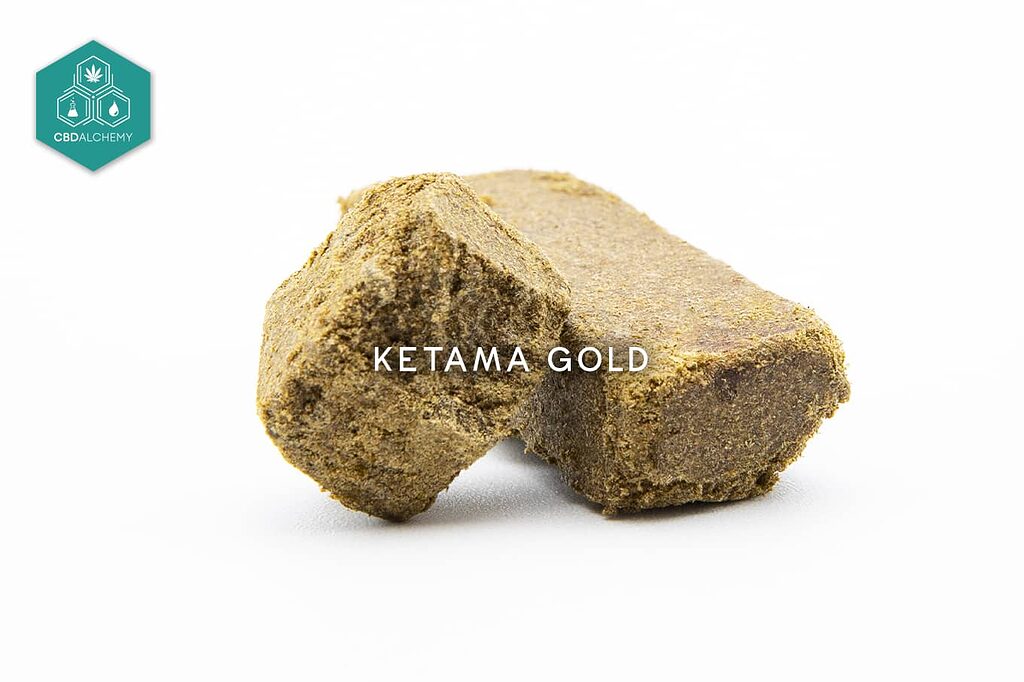
Moroccan and Lebanese hashish are two varieties of hashish well known and appreciated by consumers around the world.
Lebanese hashish, for example, is mainly produced in the Bekaa Valley and is sieved to obtain kief after aerial drying of the plants, then pressed into red or yellow blocks.
Moroccan hashish, on the other hand, is prized for its mild intensity and aromatic profile. It is found in shades ranging from dark green to brown and is marketed in brick or pollen form. Both types of hashish offer unique experiences and are highly valued by hashish consumers worldwide.
Other Notable Varieties
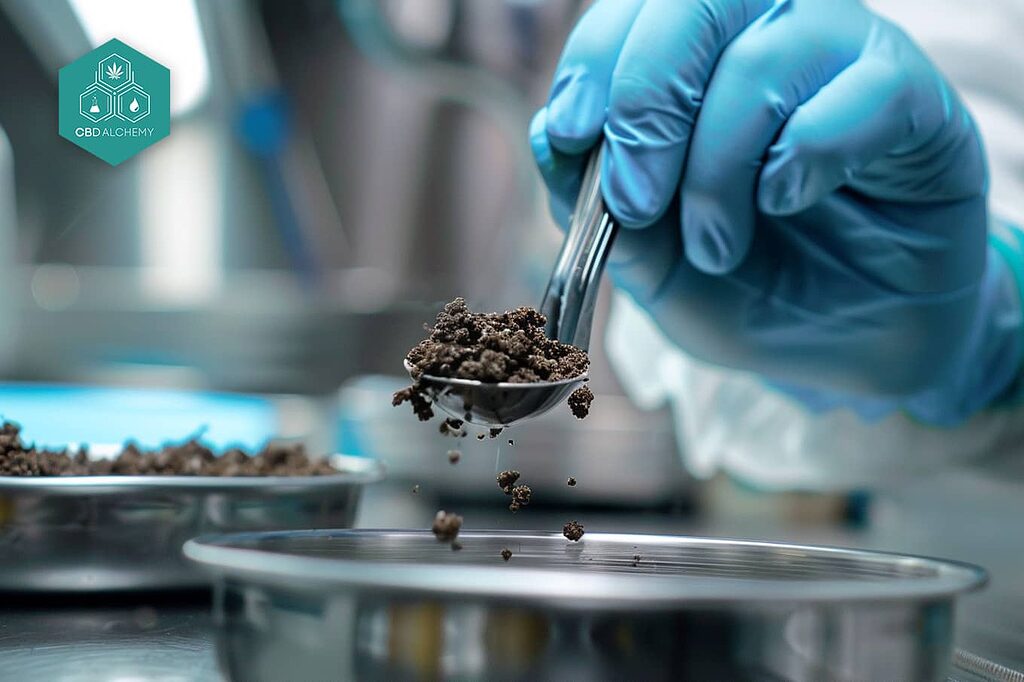
Beyond Moroccan and Lebanese hashish, there are other notable varieties of hashish that deserve mention. For example, Kashmiri hashish, known for its similarity to charas, is notable for having a spicy aroma and generating a less harsh smoke.
Nepalese hashish, made through a hand-rolling process, is famous for causing an intense body high, especially in the form of Temple Ball.
Other notable varieties include Pakistani hashish, known for its potent effects and spicy aroma, and Turkish hashish, prized for its smooth texture and distinctive aroma.
Effects of Hashish on the User
The consumption of hashish can have a range of effects on the user. The effects of the substance can range from sensory distortions to more subtle sensations, such as euphoria and relaxation.
These effects can vary from person to person, depending on the specific effect the substance has on each individual.
In addition to these effects, hashish can have an impact on the mental and physical health of the user. The practice of mindfulness can lead to positive effects, such as pain relief and reduction of anxiety and stress.
In addition, it can improve mood and increase appetite. However, it can also have negative effects, such as poor coordination, impaired breathing, tachycardia, loss of control, acute drowsiness and anxiety.
But what are the immediate and long-term effects of hashish use?
Immediate Effects of Hashish Consumption
The immediate effects of hashish consumption can be quite noticeable. Among them are:
- A feeling of relaxation and drowsiness
- Distortions in the perception of time
- A worsening of reaction time
- Difficulties in thinking
- Difficulties in the coordination of movements
In addition, users may experience the following effects after consuming hashish:
- Difficulty remembering recent events
- Disturbances in memory, attention, and concentration
- Loss of coordination
- Anxiety
- Memory problems
- Paranoia
- Vomiting
These are some of the immediate adverse effects that may be experienced.
Long Term Health Impact
Prolonged use of hashish can have long-term consequences on the user’s health. Hashish acts on the brain’s reward and gratification system, stimulating the release of dopamine and can lead to addiction and a compulsive need to consume hashish despite negative consequences.
In addition, prolonged use of hashish can have adverse consequences on mental health, such as:
- the development of psychosis, schizophrenia, especially in predisposed individuals, as well as other emotional and cognitive problems.
- It can also negatively affect academic performance and can lead to early school dropout.
- With a dependence rate of approximately 7-10% in those who try it.
Public Health Risks and Precautions
Despite the many benefits that hashish can bring, it also has some associated risks. Excessive hashish consumption can lead to side effects such as paranoia, anxiety, and memory problems. In addition, hashish is illegal in many places, so knowing the local laws is crucial before buying or consuming it.
To reduce the negative effects of hashish, it is recommended to:
- Consume it in low doses
- Avoid mixing it with other substances
- Use water pipes when consuming hashish
- Do not engage in dangerous activities after consumption
These are additional precautionary measures.
Health Problems Associated with Hashish
Hashish use can lead to specific health problems. These include:
- Irritation of the respiratory tract
- Inflammation in the lungs
- Coughing and wheezing
- Difficulty breathing.
In addition, prolonged and frequent hashish use can lead to serious cardiovascular disease, including atherosclerosis, coronary heart disease, and tachycardia, especially in people with previous heart conditions. Therefore, it is crucial to keep these risks in mind when considering hashish use.
Tips for Responsible Use
Consuming hashish responsibly requires a positive mental attitude and the right environment. It is also important to store hashish in a safe place, out of the reach of children and pets, and in an environment that protects the product from possible damage or deterioration.
Limiting the frequency and amount of hashish consumption helps minimize long-term health risks, especially for those with pre-existing heart conditions.
In addition, responsible and safe hashish use also involves being informed and respecting local laws regulating its use.
Legal and Social Aspects of Hashish
Hashish not only affects health and production, but also has legal and social repercussions. It is important to consider these aspects when analyzing its impact. Hashish is considered an illegal drug in most countries, including Europe, and is punishable by law. In Spain, penalties for possession of hashish vary according to the amount seized and its use. This means that the severity of the penalty can change in each case.
On the other hand, the existence of around 1600 cannabis social clubs in Spain operates through a legal loophole that decriminalizes the private consumption of cannabis. The social perception of hashish consumption also varies significantly between different cultures and regions.
But what are the legal implications of hashish and how has it influenced popular culture?
Hashish and the Law
In Spain, personal consumption of cannabis, which includes hashish, is allowed in private spaces; however, use in public places is prohibited.
Cultivation of cannabis for personal use is permitted as long as it is not visible to the public, but if it is determined that there is intent to distribute, this can be considered drug trafficking and can lead to severe penalties.
Penalties for drug trafficking in Spain, which cover the sale of hashish and other illicit substances, can reach up to 21 years in prison in the presence of aggravating circumstances.
Therefore, it is crucial to understand the local laws before consuming hashish and to be aware of the actions of the Guardia Civil in these cases.
Hashish in Popular Culture
The perception of hashish has changed significantly over the years, especially in popular culture. In popular media, the portrayal of cannabis has changed from being a taboo and stigmatized substance to a more normalized and occasionally celebrated item, reflecting changes in social attitudes.
Films such as ‘Pineapple Express’ and ‘The Big Lebowski’ have contributed to the comedic representation of cannabis, impacting public perception and acceptance. In addition, musicians such as Snoop Dogg and Bob Marley have incorporated cannabis into their music and persona, influencing the cultural narrative around the substance.
CBD Alchemy hashish
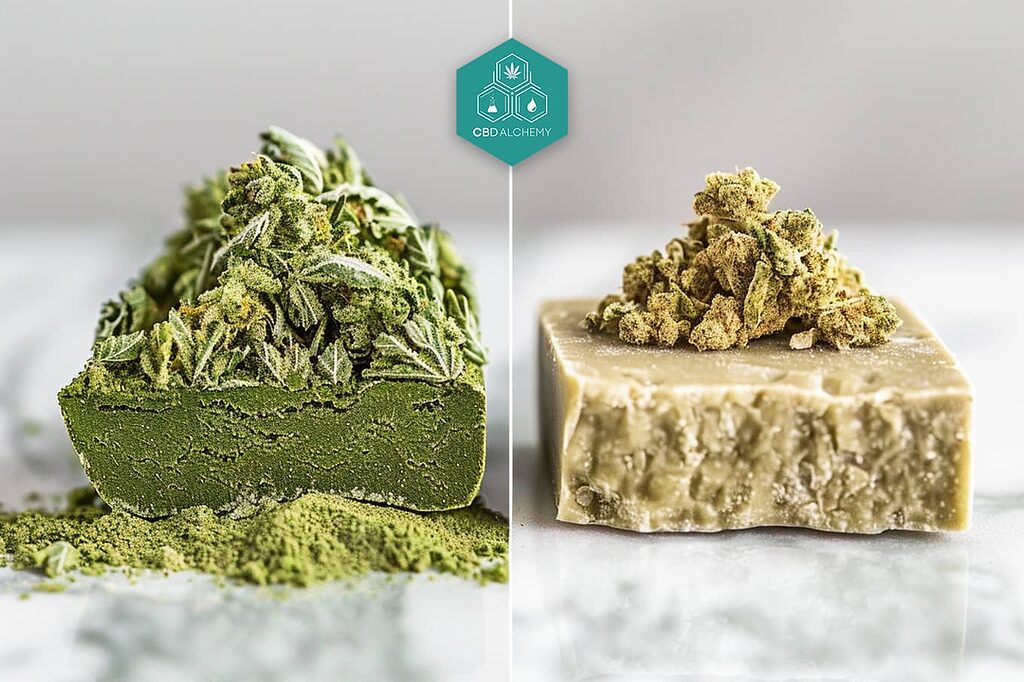
To conclude, we would like to introduce you to CBD Alchemy hashish. This product is obtained from the leaves, flowers and stems of cannabis plants, and its popularity is due to its high THC levels.
CBD Alchemy hash is produced using several methods, including rosin extraction and mechanical drum hash. This product offers a variety of benefits for those looking to relieve pain, improve mood, or simply enjoy a relaxing experience. However, as with any cannabis product, it is important to consume responsibly and be aware of the potential effects and risks.
Summary
In summary, hashish is a fascinating substance with a rich history and a variety of uses and effects. While it can have positive effects such as relaxation and pain relief, it can also have negative effects and health risks.
Therefore, it is crucial to be informed about hashish, understand its effects and take precautions when consuming it. Remember, responsible and safe hashish consumption begins with education and respect for the substance.
Frequently Asked Questions
What is hashish and what are its effects?
Hashish is a psychoactive substance that produces effects similar to those of marijuana, but with an impact on the cognitive level in the short and long term. It is important to be aware of its effects before consuming it.
